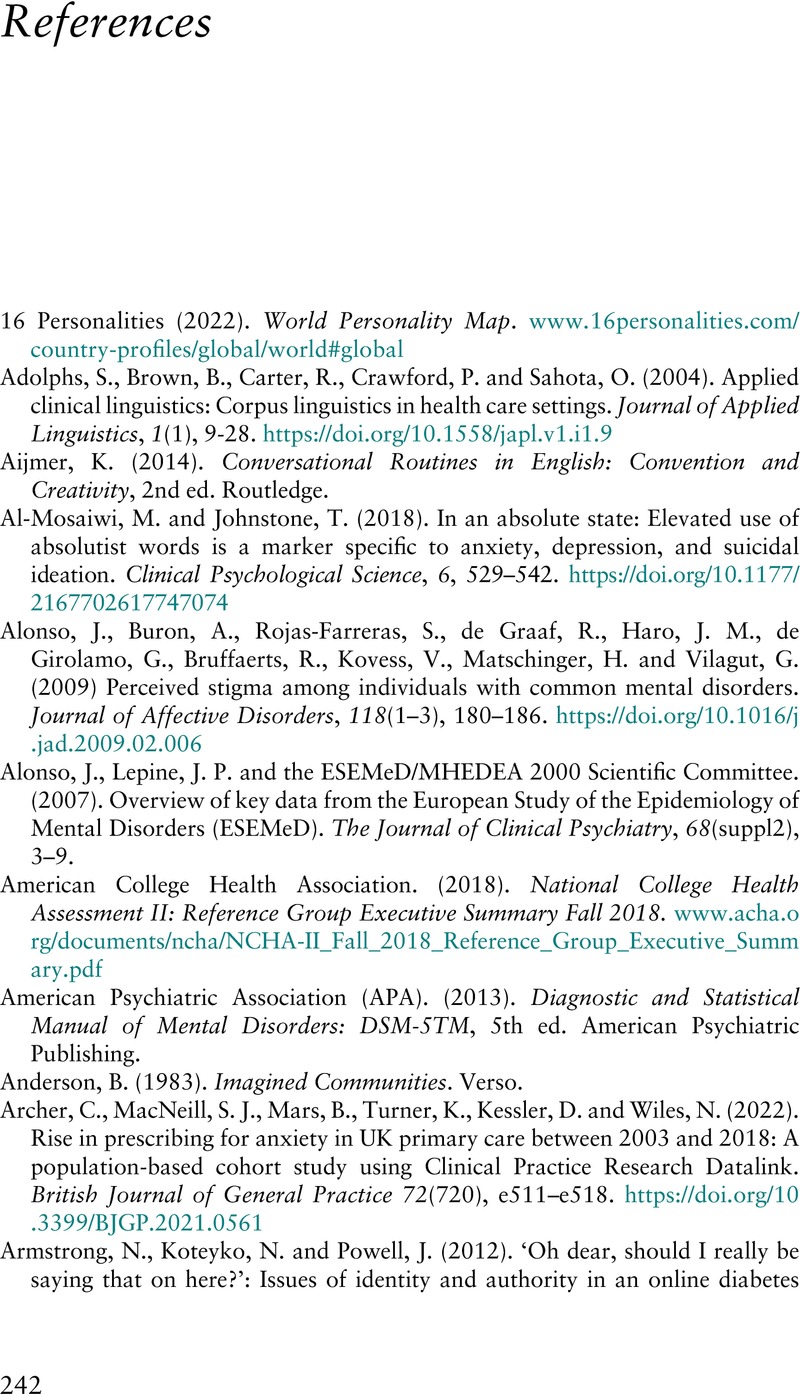Book contents
- Language, Discourse and Anxiety
- THE CAMBRIDGE APPLIED LINGUISTICS SERIES
- Language, Discourse and Anxiety
- Copyright page
- Contents
- Figures
- Tables
- Acknowledgements
- Preface
- 1 Anxiety, Online Fora and This Study
- 2 Sketching Anxiety
- 3 The Lived Experience
- 4 Creating a Community
- 5 Sex and Gender
- 6 Comparing Cultures
- 7 Time
- 8 Conclusion
- References
- Index
- References
References
Published online by Cambridge University Press: 08 June 2023
- Language, Discourse and Anxiety
- THE CAMBRIDGE APPLIED LINGUISTICS SERIES
- Language, Discourse and Anxiety
- Copyright page
- Contents
- Figures
- Tables
- Acknowledgements
- Preface
- 1 Anxiety, Online Fora and This Study
- 2 Sketching Anxiety
- 3 The Lived Experience
- 4 Creating a Community
- 5 Sex and Gender
- 6 Comparing Cultures
- 7 Time
- 8 Conclusion
- References
- Index
- References
Summary

Information
- Type
- Chapter
- Information
- Language, Discourse and Anxiety , pp. 242 - 258Publisher: Cambridge University PressPrint publication year: 2023
